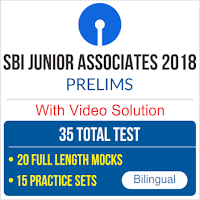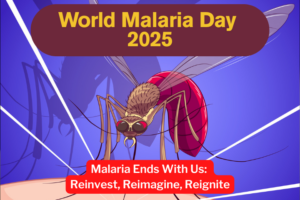Dear Aspirants,
Reasoning Ability is an onerous section. With the increasing complexity of questions, it becomes hard for one to give it the cold shoulder. The only way to make the grade in this particular section in the forthcoming banking exams is to practice continuously with all your heart and soul. And, to let you practice with the best of the latest pattern questions, here is the Adda247 Reasoning Quiz based on the exact same pattern of questions that are being asked in the exams.
Directions (1-5): Read the following information carefully and answer the following questions:
T, S, R, Q, P and O are six fruit sellers who belong to different six different states viz. A, B, C, D, E and F but not necessarily in the same order. Each of them sell different types of fruit viz. Watermelon, Pineapple, Mango, Orange, Grapes and Banana, though not necessarily in the same order. They have different number of kids viz. one, two or three. Not more than two persons have the same number of kids. P who has only one kid belongs to C. S and R have the same number of kids. The one who is selling Watermelon fruit belongs to F and the one who is selling Pineapples belongs to D. O who has two kids neither belongs to B nor E. T who belongs to A, has two kids and is selling Mango. The person who belongs to B is not selling grapes. The one who is selling banana does not have the same number of kids as P. Q does not belong to E. Neither Q nor S belongs to F. R belongs to D.
Q1. Which of the following group of persons have the same number of kids?
(a) P and O
(b) T and S
(c) S and R
(d) T and P
(e) None of these.
Q2. The one who belongs to B is selling which of the following fruits?
(a) Orange
(b) Watermelon
(c) Mango
(d) Can’t be determined
(e) None of these
Q3. Who among the following is selling watermelon?
(a) R
(b) S
(c) P
(d) O
(e) None of these
Q4. Which of the following is true?
(a) T belongs to D
(b) R belongs to E
(c) P is selling Banana
(d) The one who belongs to E is selling Banana
(e) None of these
Q5. Which of the following fruits are sold by the persons who have three kids?
(a) Banana and Pineapple
(b) Pineapple and Orange
(c) Orange and Banana
(d) Grapes and Mango
(e) None of these
Directions (6-10): Each question consists of two conclusions followed by a group of statements. Consider the given statements to be true even if they seem to be at variance with commonly known facts. Read all the statements and then decide for which of the following group of statements, both the conclusions logically follows.
Q6. Conclusions:
I. All black being mat is a possibility
II. Some moon is definitely not mat.
(a) Statements: No black is spider. Some spider are moon. Some spiders are mat.
(b) Statements: Some moon is spider. No spiders are mat. Some black are moon.
(c) Statements: All moon is spider. Some black are moon. Some spiders are mat.
(d) Statements: All moon is spider. No black are moon. Some spiders are mat.
(e) Statements: Some moon is spider. No black are moon. All spiders are mat.
Q7. Conclusions:
I. Some boats being neither lakes nor papers is a possibility
II. All rivers being boats is a possibility
(a) Statements: Some boats are lakes. No rivers are boat. No lakes are paper.
(b) Statements: No lakes are rivers. All boats are lakes. All rivers are papers.
(c) Statements: Some lakes are rivers. No boats are lakes. All rivers are papers.
(d) Statements: Some lakes are rivers. Some boats are lakes. All rivers are papers.
(e) Statements: All lakes are rivers. Some paper are lakes. No rivers are boat.
Q8. Conclusions:
I. Some bridge being pole is a possibility.
II. No pole is road
(a) Statements: All road are bridge. No road is pole . All goats are pole.
(b) Statements: Some goats are pole. No road are bridge. Some goat is bridge .
(c) Statements: All road are bridge. Some goat is bridge. No goats are pole.
(d) Statements: No road are bridge. No goat is bridge. Some goats are pole.
(e) Statements: Some road are bridge. No goat is bridge. No goats are pole.
Q9. Conclusions:
I. Some spider which are black is also a part of mat.
II. All mat if they are black then some part of the mat must be moon.
(a) Statements: Some moon is spider. No black are moon. All spiders are mat.
(b) Statements: No moon is spider. All black are moon. Some spiders are mat.
(c) Statements: All moon is spider. No black are moon. No spiders are mat.
(d) Statements: No moon is spider. No black are moon. Some spiders are mat.
(e) Statements: All moon is spider. Some black are moon. All black are mat.
Q10. Conclusions:
I. Some papers are not boats
II. Some boats which are paper are also lake.
(a) Statements: No lakes are rivers. All boats are lakes. Some rivers are papers.
(b) Statements: All lakes are rivers. Some boats are lakes. No rivers are papers.
(c) Statements: All lakes are rivers. No boats are lakes. All rivers are papers.
(d) Statements: Some papers are boat. No river is boat. All river are paper. All paper are lake.
(e) Statements: No lakes are rivers. No boats are lakes. No rivers are papers.
Directions (11-15): In each of the following questions assuming the given statements to be true, find out which of the two conclusions I and II given below them is/are definitely true. Give answer
(a) if only conclusions I is true.
(b) if only conclusions II is true.
(c) if either conclusion I or conclusion II is true.
(d) if neither conclusion I nor conclusions II is true.
(e) if both conclusions I and II are true.
Q11. Statements: E ≤ H, O< Q, H < O
Conclusions: I. E< O
II. H < Q
Q12. Statements: N ≤ I, Q ≤ S, I < Q
Conclusions: I. N ≤ S
II. I < S
Q13. Statements: U = T, T > N, S ≥ U
Conclusions: I. S > N
II. S > T
Q14. Statements: I < Q, G ≤ O, Q > G
Conclusions: I. I = G
II. Q = O
Q15. Statements: D = G, P > U, G ≥ P
Conclusions: I. D ≥ P
II. D = P






 GA Capsule for SBI Clerk Mains 2025, Dow...
GA Capsule for SBI Clerk Mains 2025, Dow...
 The Hindu Review October 2022: Download ...
The Hindu Review October 2022: Download ...
 World Malaria Day 2025
World Malaria Day 2025




